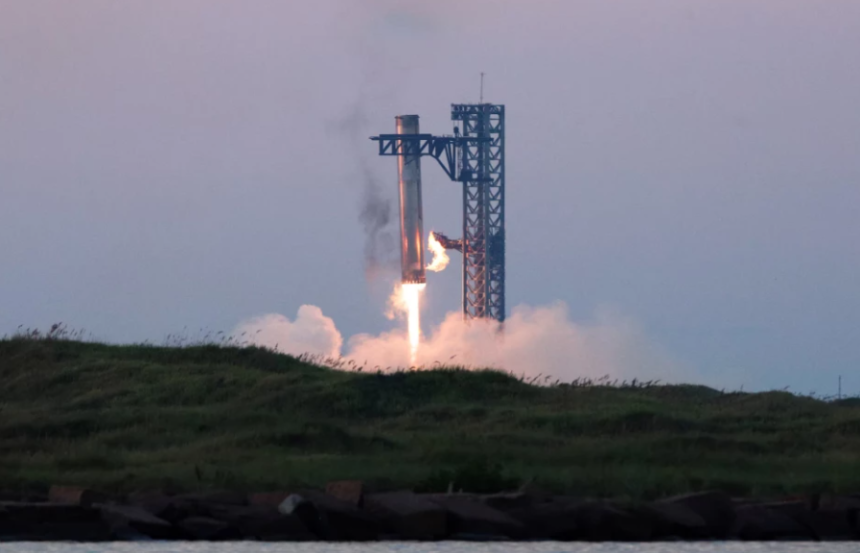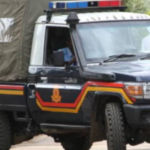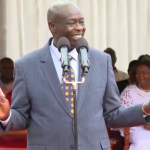In its fifth Starship test flight on Sunday, SpaceX successfully returned the towering first stage booster to its Texas launch pad for the first time, utilizing giant metal arms. This achievement marks another engineering milestone in the company’s efforts to develop a reusable vehicle for missions to the Moon and Mars.
The rocket’s first stage “Super Heavy” booster lifted off at 7:25 a.m. CT (1225 GMT) from SpaceX’s Boca Chica launch facilities, propelling the Starship second stage rocket into space. The two stages separated at an altitude of roughly 70 km (40 miles), allowing the booster to begin its descent.
To slow its rapid descent back to the launch site, the Super Heavy booster reignited three of its 33 Raptor engines, targeting the launch tower from which it had originally taken off. The tower features two large metal arms designed for this purpose.
As the engines roared, the 233-foot (71 meters)-tall Super Heavy booster fell into the arms of the launch tower, securing itself in place using its four forward grid fins, which helped steer it through the air. “The tower has caught the rocket!!” Elon Musk announced on X after the successful catch.
This innovative catch-landing method is the latest development in SpaceX’s test-to-failure strategy for creating a fully reusable rocket capable of carrying more cargo into orbit, transporting humans to the Moon for NASA, and ultimately reaching Mars, which is Musk’s ultimate vision.
On Saturday, the U.S. Federal Aviation Administration approved SpaceX’s launch license for the Starship test, following weeks of tension between the company and the regulator regarding the pace of launch approvals and fines associated with SpaceX’s Falcon 9 rocket.
First unveiled by Musk in 2017, the Starship has experienced multiple explosions during previous tests. However, it successfully completed a “full flight in June” for the first time. The Super Heavy booster lifted off from Texas, sending the Starship second stage on a near-orbital trajectory toward the Indian Ocean, successfully executing a fiery hypersonic reentry about 90 minutes later.



